Sound
Grade 6 Science Worksheets
Close your eyes and listen to your surroundings for a minute. We hear sounds around us all the time! Sounds can be loud noises, pleasant music or everyday constants like ticking of a clock and chirping of birds! Fireworks go boom, popcorns pop and bells go ding-a-ling! Whatever the sound is, all of them are made the same way – through vibrations.
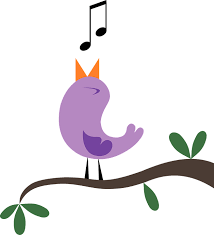
Schedule a Free session to clear worksheet doubts
No credit card required, no obligation to purchase.
Just schedule a FREE Sessions to meet a tutor and get help on any topic you want!
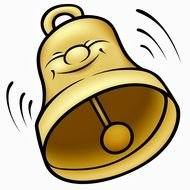
When we ring a bell, as the clapper hits the metal back and forth, it vibrates the sides of the bell, which in turn vibrates the particles that make up the air around them. These air particles vibrate their neighboring particles and so on. These paths of vibration are called waves. When the sound waves reach our ears, they go inside and hit our eardrums. The surface of our eardrum vibrates and sends a signal to our brain. The brain analyzes the sound and recognizes it as the sound of a bell!
Thus, when any sound is produced, there is some vibration initiated. These vibrations create waves in all directions like an expanding balloon and upon reaching someone’s ears, it is perceived as sound.
Mechanical waves
Sound is a type of mechanical wave wherein particles of matter oscillate or vibrate through a medium. They cannot travel through a vacuum.
They are of two types –
- Longitudinal waves – The particles vibrate parallel to the direction of the propagation of waves.
- Transverse waves – The particles vibrate perpendicular to the direction of the propagation of waves.
Sound depends on three things –
- A vibrating source to start off the sound waves
- A medium to carry the waves
- A receiver to perceive them

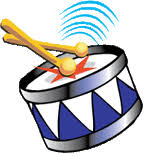
A VIBRATING SOURCE – Whether you are a good singer or not, try singing your favorite song aloud. While singing, keep two of your fingers on your throat. Do you feel a sensation on your fingertips? This is because of vibration in our vocal cords. Also try touching the surface of a loudspeaker. Do you feel the moving surface? Thus, every sound is accompanied by vibrations. When you strum a guitar, the strings vibrate and make beautiful sounds. If you look closer, you can even see the strings moving. Now use your palm to stop the vibrating strings abruptly, you will see that the sound stops too!
A MEDIUM – From the source, the sound waves pass into a medium. The medium could be any substance through which sound waves can travel. These include air, water and solid objects. The waves can travel in any direction in the medium.
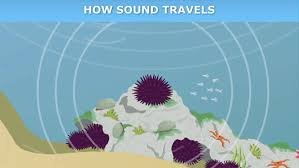
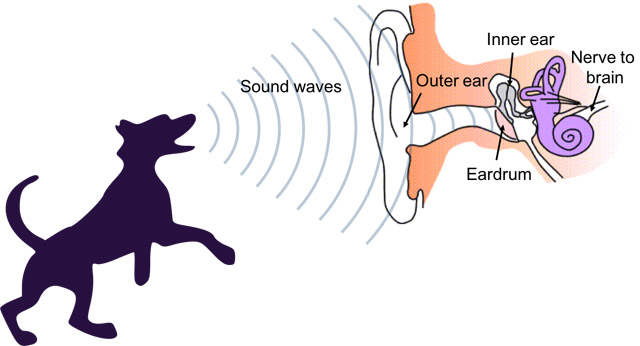
A RECEIVER – When these sound waves reach a receiver like a person or an animal, they enter their ears and reach the eardrums. The surface of eardrums starts vibrating and sends these waves onward towards the brain in the form of signals. These signals are interpreted by the brain and the individual reacts accordingly. For example, when you hear the alarm clock, you wake up (or choose not to)! When your Mom calls you, you respond to her. When your pet hears the lunch bell, he comes running towards it. And you feel happy when you hear your favorite song!
Personalized Online Tutoring from eTutorWorld
eTutorWorld offers affordable one-on-one live tutoring over the web for Grades K-12, Test Prep help for Standardized tests like SCAT, CogAT, MAP, SSAT, SAT, ACT, ISEE and AP. You may schedule online tutoring lessons at your personal scheduled times, all with a Money-Back Guarantee. The first one-on-one online tutoring lesson is always FREE, no purchase obligation, no credit card required.
For answers/solutions to any question or to learn concepts, take a FREE TRIAL Session.
No credit card required, no obligation to purchase.
Just schedule a FREE Sessions to meet a tutor and get help on any topic you want!
Speed of sound
The speed of sound depends on the medium it is traveling through. In air at 70⁰F, it travels about one mile in five seconds. In warmer air, it travels faster. Sound travels faster in liquids like water and even faster in solids like iron. In one of the hardest material like diamond, sound travels at 12,000 meters per second, almost 35 times faster than in air.
Properties of sound
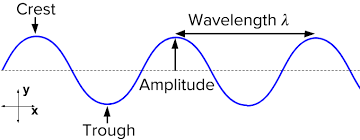
Frequency – Sound is a vibration that propagates as a wave through a medium. The number of vibrations or oscillations per second is called its frequency. It is measured in Hertz. If five complete waves are produced in one second, then the sound frequency is 5 Hz. Higher the frequency, higher is the pitch. A high-pitched whistle, a squeal, a school bell, fireworks and nails scratching on blackboard are examples of high pitch, whereas, bass drums, a deep male voice, a gong or a cello has low pitch sounds. Humans have an audible range of 20 Hz to 20 kHz.
Intensity – Intensity of sound determines its loudness or volume. The amplitude of a sound wave determines its intensity. It is the measure of the height of the wave. Larger the amplitude louder is the sound. Smaller amplitude means a softer sound. Banging a hammer will be a loud sound, whereas sound of the wind or piano will be soft sounds. It is measured in Decibel (dB). Sound above 80dB is generally termed as noise.


How does a human make sounds?
When air from the lungs comes out through the vocal folds (within the larynx or voice box), and mouth, it creates a sound. The sounds are characterized by various parts and folds of the tongue, the teeth, palate, jaw and our lips.
To speak, the lungs pump air and the air pressure vibrates the vocal cords. The muscles of the larynx fine tune the sound, and the mouth and its parts articulate and filter it. All three of them together, are capable of producing intricate arrays of sound and emotions. This includes talking, singing, shouting, laughing, screaming, crying and so on. Can you name some other sounds that we can create?
Note: The sound caused by the reflection of a sound wave from a surface is known as echo.
Check Point
- Sound travels with the help of ___________ of particles in a medium.
- Sound travels ________ in solids as compared to in liquids and gases.
- Any sound upon reaching our ears, vibrates the surface of the __________ that sends a signal to our brain.
- The pitch of a cello would be __________ than the pitch of a screaming child. (higher/lower)
- Aside from the lungs and parts of the mouth, the _______ within the larynx help in creating a definite sound with our voice.
Answer Key
- Vibrations
- Faster
- Ear drums
- Lower
- Vocal cords or folds
Schedule a Free session to clear worksheet doubts
No credit card required, no obligation to purchase.
Just schedule a FREE Sessions to meet a tutor and get help on any topic you want!
Learn more about Scientific Method and other important topics with 7th Grade Science Tutoring at eTutorWorld. Our expert science tutors break down the topics through interactive one-to-one sessions. We also offer the advantage of customized lesson plans, flexible schedules and convenience of learning from home.
Pricing for Online Tutoring
| Tutoring Package | Validity | Grade (1-12), College |
|---|---|---|
| 5 sessions | 1 Month | $124 |
| 1 session | 1 Month | $25 |
| 10 sessions | 3 months | $239 |
| 15 sessions | 3 months | $354 |
| 20 sessions | 4 months | $449 |
| 50 sessions | 6 months | $1049 |
| 100 sessions | 12 months | $2049 |
6th Grade Free Worksheets
- Inquiry process
- Nature of Science
- Scientific Inquiry
- Inquiry, Analysis and Problem Solving
- Ethical Practices
- Science and Society
- Biotic and Abiotic Factors
- Impact of Organisms
- Adaptation
- Spheres of Earth
- Natural Resources
- Environmental Issues
- Conservation of Earth
- Understanding Technology
- Abilities To Do Technological Design
- Structure of Earth
- Solar System
- Rocks and Fossils
- Earth Systems
- Plate Tectonics
- Evolution
- Magnetic Field of Earth
- Geologic Time
- Materials and Processes That Shape a Planet
- Astronomy
- Ecology
- Energy
- Kinetic and Potential Energy
- Energy Transfer
- Matter and its Structure
- States of Matter
- Physical and Chemical Changes
- Force and Motion
- Electricity and Magnetism
- Wave Interactions
- Sound
- Light
- Introduction to Life Science
- The Origin & History of Life On Earth
- Plant and Animal Cells
- Parts of a Cell
- The Cell Cycle
- How Living Organisms Get Energy
- Classification of Organisms
- How Plants Grow & Reproduce
- The Human Respiratory System
- The Human Cardiovascular System
- The Human Digestive System
- The Human Endocrine Systems
- The Human Nervous System
- The Human Muscular System
- The Human Skeletal System
Images Credit:
http://www.thesalmons.org/earbird/
https://pixy.org/2107424/
https://ucscphysicsdemo.sites.ucsc.edu/physics-5b6b-demos/oscillations-and-waves/longitudinal-wave-demo/longitudinal-transverse-waves-2jui4hv/
https://www.physicscentral.org/experiment/physicsathome/drummingfingers.cfm
https://www.sciencelearn.org/videos/802-how-sound-travels-under-water
https://www.sciencebuddies.org/science-fair-projects/project-ideas/Phys_p017/physics/outer-space-silent-sound-waves
https://www.khanacademy.org/science/ap-physics-1/ap-mechanical-waves-and-sound/wave-characteristics-ap/a/wave-characteristics-review-ap-physics-1
https://unterhalten13.live/?utm_campaign=QPF8euu28II5lw7O2iHhCidoSOXmw5oLxD6bwphw43U1&t=main9
https://phys.org/news/2016-06-pitch-range-vocal-cords.html


